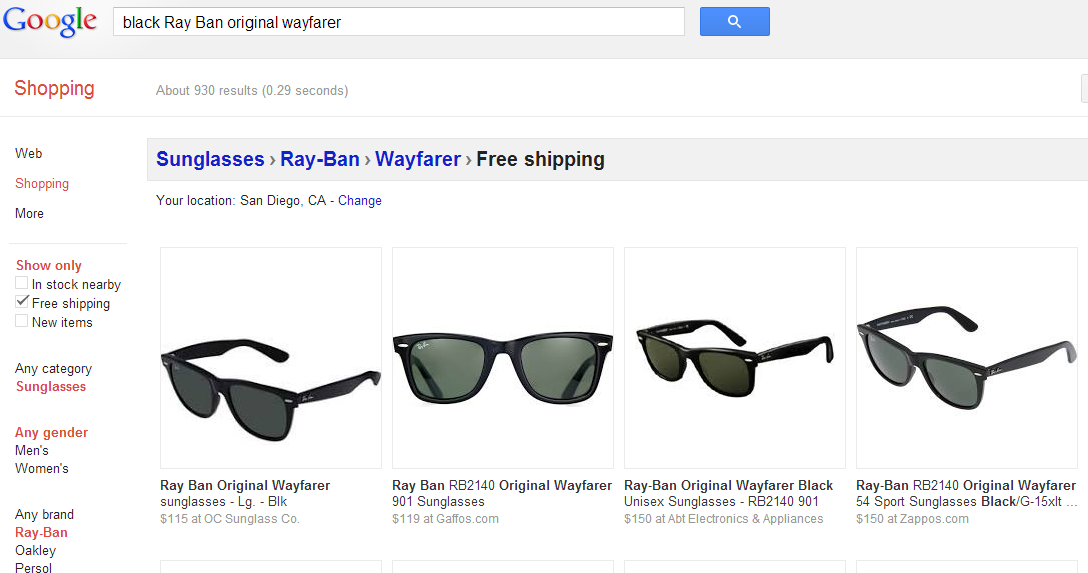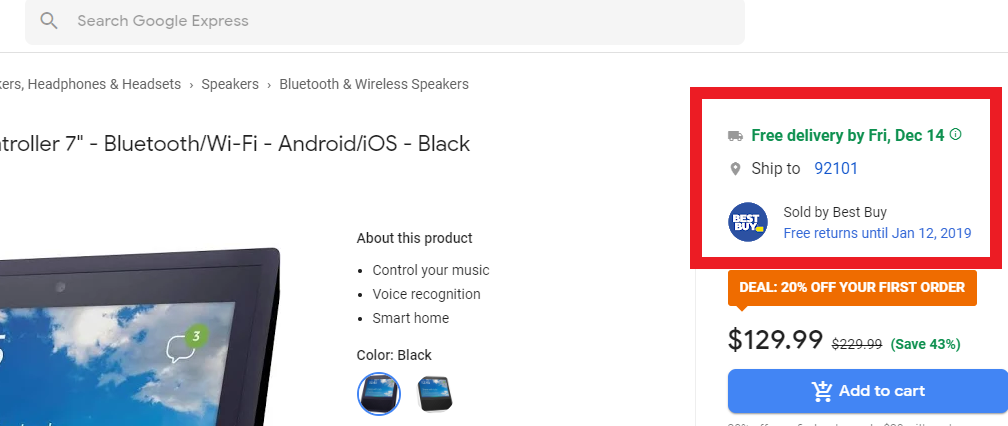There’s an art to creating a good ecommerce shipping strategy. You have to ensure solid profit margins for your business, while still offering an affordable, competitive option that will keep your customers happy (and coming back for more).
After all, shipping surprises are one of the most common reasons ecommerce shoppers abandon their carts, and they’re the veritable kiss of death for most online merchants.
Want to ensure you strike that delicate balance between “great deal” and “good for the bottom line?” This ecommerce shipping guide can help.
How Important is Free Shipping to Customers in 2019?
In our “Amazon Consumer Study“, we asked 1500 men and women five key questions about their Amazon shopping habits—from product discovery to checkout.
Although some results were expected, others were less predictable (ex: men were more likely than women to run price checks before making purchases).
So, where does free shipping fall in comparison to product price, reviews, and other purchasing factors?
According to our data, price won out as the determining factor in both male and female respondents’ decisions to make a purchase on Amazon, followed by convenience of shipping and quality of reviews.

CPC Strategy’s Amazon Consumer Survey
The survey revealed that ages 55-65+ were least impressed by “Convincing product descriptions and photos,” “Price,” and “Quality of reviews” than any other age group.
Instead, this group strongly values the “Convenience” of Amazon (ex. Prime’s free two-day shipping).
In contrast, 18-24-year-olds care far less about shipping and weigh price as the single most important factor in their choice to go with Amazon.
According to our team of Amazon advertising experts, 18-24-year-olds are conditioned to expect free shipping when shopping online— and this group probably also has less disposable income, which explains why price is so important.
The key takeaway?
Price is still king, but fast free shipping and customer reviews can make or break even the cheapest sale.
To learn more, check out the entire study available here.
The Best Shipping for Ecommerce
Despite what many newbie online merchants think, the best shipping solution isn’t a one-size-fits-all (at least if you want to keep your profit margins healthy).
In reality, ecommerce shipping needs to be highly tailored to your exact products, your market and your customers. It also needs to be a comprehensive one, in which all departments are on board and up to speed with what’s expected of them.
6 Ecommerce Shipping Best Practices
In the eCommerce world, cookie-cutter approaches don’t work, and there’s no right or wrong strategy when it comes to shipping.
There are, however, some best practices that can help you home in on the most effective solution for your business and the unique products you’re offering your clients.
These include:
1. Establishing up-front goals.
What’s the aim of your overall approach to shipping? Is it to allow for the biggest volume orders at the lowest possible price? To increase your up-sells at checkout? To cut costs or improve operational efficiencies?
It’s okay to have more than one goal for your shipping strategy — just make sure you prioritize these, so you know which ones to focus on first.
2. Determining your strategy.
The right shipping solution depends on your products’ size and weight, your average order size, the location (shipping destination) of your customers and the shipping options/services/routes you have available to reach those locations.
For uniform sized products and orders, a flat-rate or table-based approach can give you a simple yet effective shipping strategy. If your products vary greatly in size and weight, you’ll want to work with carriers directly to see what rates you qualify for.
Just make sure you’re using the most accurate and up-to-date weights and dimensions possible, as this will keep costs lowest. Free shipping can be a good solution too, but only if you set a safe order minimum that protects your margins first.

3. Calculate shipping and handling costs.
Shipping and handling fees should be set very carefully and very thoughtfully, and as your business changes and grows, they need to be re-assessed, re-calculated and revised. Here’s 3 elements you’ll want to consider:
Packaging
- What types of boxes, bags, envelopes, tape and inserts are you using?
Handling
- Do you have to pay someone to pack your orders?
- How much do you pay them per hour and how much time does it take them on each package?
- Do you have a warehouse for storage and a pick-and-pack system you also need to cover?

“Pick lists and packing slips and an easily organized warehouse, garage, and/or shelving can cut down on the wrong product finding its way into a box,” Joey Blanco, Content Manager at Shipstation said in a recent interview.
“Having a second set of eyes confirming that what’s in the box is what was ordered helps, too.”
Postage
- What mailing service are you using?
Check out their rate chart, and be sure to factor in any surcharges that might apply (UPS and FedEx have various fuel surcharges.) Add these charges to your spreadsheet, too. You can also use this as an opportunity to rate-shop.
Check out what each shipping provider offers in terms of rates and surcharges, and find the lowest cost delivery methods for your products.
Your ultimate goal is to calculate your average shipping, packaging and handling costs per order. If your costs come out to roughly the same on all products and orders, then you can charge a flat rate for every transaction.
If your shipping and handling vary greatly depending on order size and package weight, you’ll want to have a sliding scale of fees depending on what a customer orders.
4. Building the right team.

There’s so much that goes into getting a product from point A to point B, and you want the absolute best every step of the way.
You need expert marketers, web designers, copywriters, fulfillment experts and, of course, customer service reps — and don’t forget the right logistical vendors. Make sure each one is on board with your overall strategy and goals and that they know his or her place in the pipeline.
5. A/B testing.
If you’re considering a few strategies or just want to see how your new solutions/team do in action, run a few A/B tests.
See how free shipping plays out versus a table-rate approach, and follow up a few weeks later to see which options were most successful for both your bottom line and from a customer satisfaction standpoint. Quick email surveys can help here.

6. Watching your metrics.
It’s important to take at least a monthly look at your orders, as well as the shipping costs (both to you and the customer) that came with them. Work to understand how your shipping policies impact your bottom line, and make adjustments as necessary over time.
Just make sure to alert existing customers if the shipping they’ve become accustomed to will change.
Don’t forget that snail-mail shipping doesn’t have to be your customers’ only options. If you have brick-and-mortar stores, free in-store pickup options are particularly popular with today’s shoppers. These cut down on both your cost and theirs, and often mean higher-volume orders as a result.
Want more help homing in on the best ecommerce shipping solutions for your business? Have a question we didn’t answer in our ecommerce shipping guide? Email [email protected].
You Might Be Interested In













